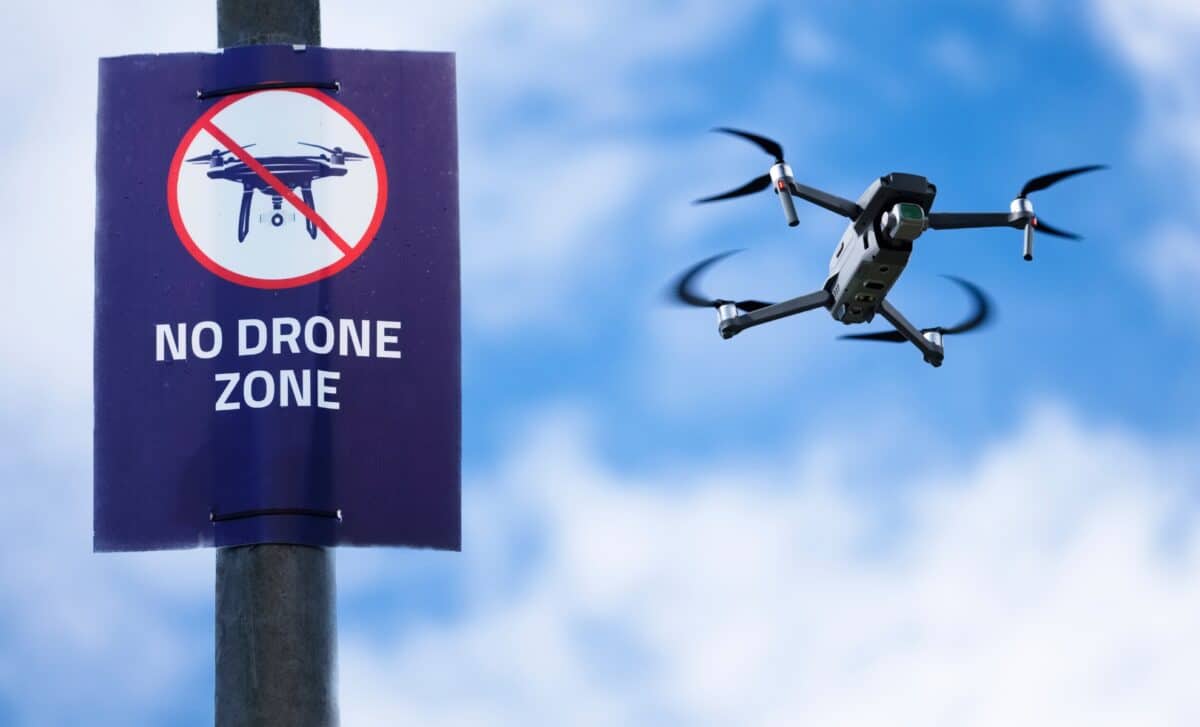Illegal drone incursions into restricted airspace have risen sharply in early 2025, with 411 reports recorded across the United States between January and March—a 25.6% increase compared to the same period in 2024. The incidents include near-collisions with commercial aircraft, coordinated drone flights over military bases, and sightings of unidentified aerial objects in densely populated airspaces.
This spike in unauthorized drone activity is drawing increasing concern from aviation authorities, lawmakers, and pilots who warn that existing measures are insufficient to prevent a potentially catastrophic event. Pilots and safety experts point to a disturbing pattern of drones operating at dangerous altitudes, often just feet from flight paths, particularly around urban centers and military installations.
The Federal Aviation Administration (FAA) and NASA’s Aviation Safety Reporting System (ASRS) have documented a growing number of drone-related incidents near major airports and sensitive locations. Between Q1 2023 and Q1 2024, the increase was modest at 4.8%, but late 2024 marked a turning point with a wave of unexplained drone sightings over New Jersey and the Northeast. These incidents, some involving drones flying in coordinated patterns at night, prompted investigations by the FAA, FBI, and Department of Defense, though public statements later downplayed the threat. According to The Debrief, recent FAA and ASRS data contradict these assessments and suggest a rapidly escalating risk.
A Hurricane Just Shook the Edge of Space — Scientists Didn’t See It Coming
Repeated Near-Misses Highlight Risks to Commercial Aviation
Multiple ASRS reports in early 2025 detail near-midair collisions involving drones and passenger aircraft, underscoring the operational hazards these incursions now pose. In March, a silver drone measuring 4 to 5 feet in diameter passed within 20 feet of a commercial airliner descending toward a major U.S. airport, leaving no time for evasive maneuvers. The pilot later stated, “The incident happened too quickly to take any evasive maneuvers.”
Other incidents include a flashing red drone flying within 50 to 100 feet of an inbound plane over Houston’s George Bush Intercontinental Airport and a black drone passing just 5 to 7 feet from the cockpit window of a cargo aircraft approaching Phoenix Sky Harbor. In another case near Long Beach, California, a pilot narrowly avoided a red, multi-rotor drone at 3,500 feet, warning in their report that a direct impact “could have caused a catastrophic midair collision.”
As reported by the media source, while many of the drones involved are standard hobbyist models, some reports describe larger, more advanced aircraft. In one case over Pennsylvania, a pilot spotted three unmanned systems flying in triangle formation near a military base. Another report describes a 3- to 4-foot long, white drone encountered at 15,500 feet near Fort Worth, Texas.
New Hotspots Emerge as Drone Incidents Become More Widespread
The geographic distribution of drone sightings in 2025 reveals notable shifts, with urban centers and military-adjacent areas becoming prominent hotspots. Chicago registered 29 unauthorized sightings in the first quarter—more than double its total for the same period in 2024—while Houston, New York, Orlando, and San Diego followed with 19 to 14 incidents each. Based on FAA data cited by The Debrief, these cities saw a significant uptick in drone-related reports compared to the previous year.
At the state level, Florida recorded 73 incidents in Q1 2025, up from 55, while California and Texas also reported substantial increases. Illinois emerged as a key area of concern, primarily due to the spike in reports from Chicago. Notably, areas like San Diego—home to several U.S. Navy and Marine Corps facilities—have seen drone incursions near restricted military zones, raising concerns about potential surveillance or reconnaissance activity.
In some of the more unusual incidents, drones have been observed trailing aircraft or hovering near critical infrastructure. On March 1, 2025, air operations at Gillespie Field in California were suspended after a drone followed a Cessna 172, prompting a search by local law enforcement. In another instance, an air ambulance crew reported a close encounter with an object that passed less than 10 feet from the aircraft; the crew could not positively identify it due to the use of night vision equipment.
Security Concerns Mount Amid Federal Response Gaps
The frequency and nature of drone incursions have prompted warnings from lawmakers and defense officials, who argue that these events go beyond accidental violations by hobbyists. During a recent U.S. House Oversight Committee hearing, Subcommittee Chairman William Timmons described the rise in drone activity over military sites as “a coordinated effort by our adversaries to collect valuable intelligence.” According to his testimony, incursions are increasingly being treated as security threats.
Rear Admiral Paul Spedero Jr., Vice Director of Operations for the Joint Chiefs of Staff, acknowledged that U.S. defense capabilities lag behind the pace of drone technology. “The technology to field systems has far outpaced the technology to defeat those systems,” he testified, pointing to the difficulty of intercepting autonomous drones that may not even rely on GPS.
As reported by the news platform, while public awareness campaigns about safe drone use have seen some localized success, the FAA’s first-quarter 2025 data suggests that the broader threat is growing. A pilot report following a near-miss at Fort Lauderdale-Hollywood International Airport warned, “The FAA needs to get a hold on this, or we are going to have a catastrophic event happen to a commercial aircraft.”








